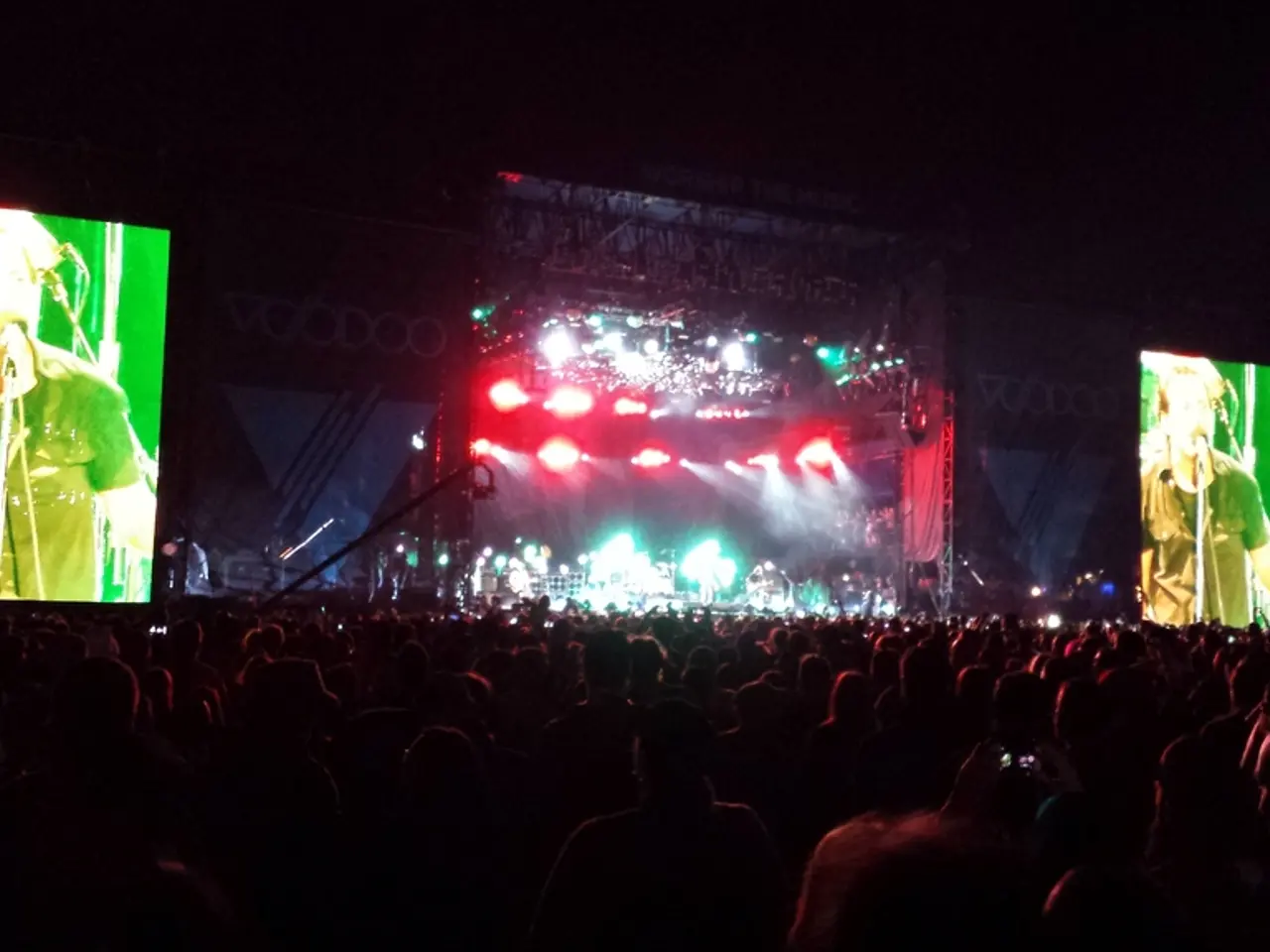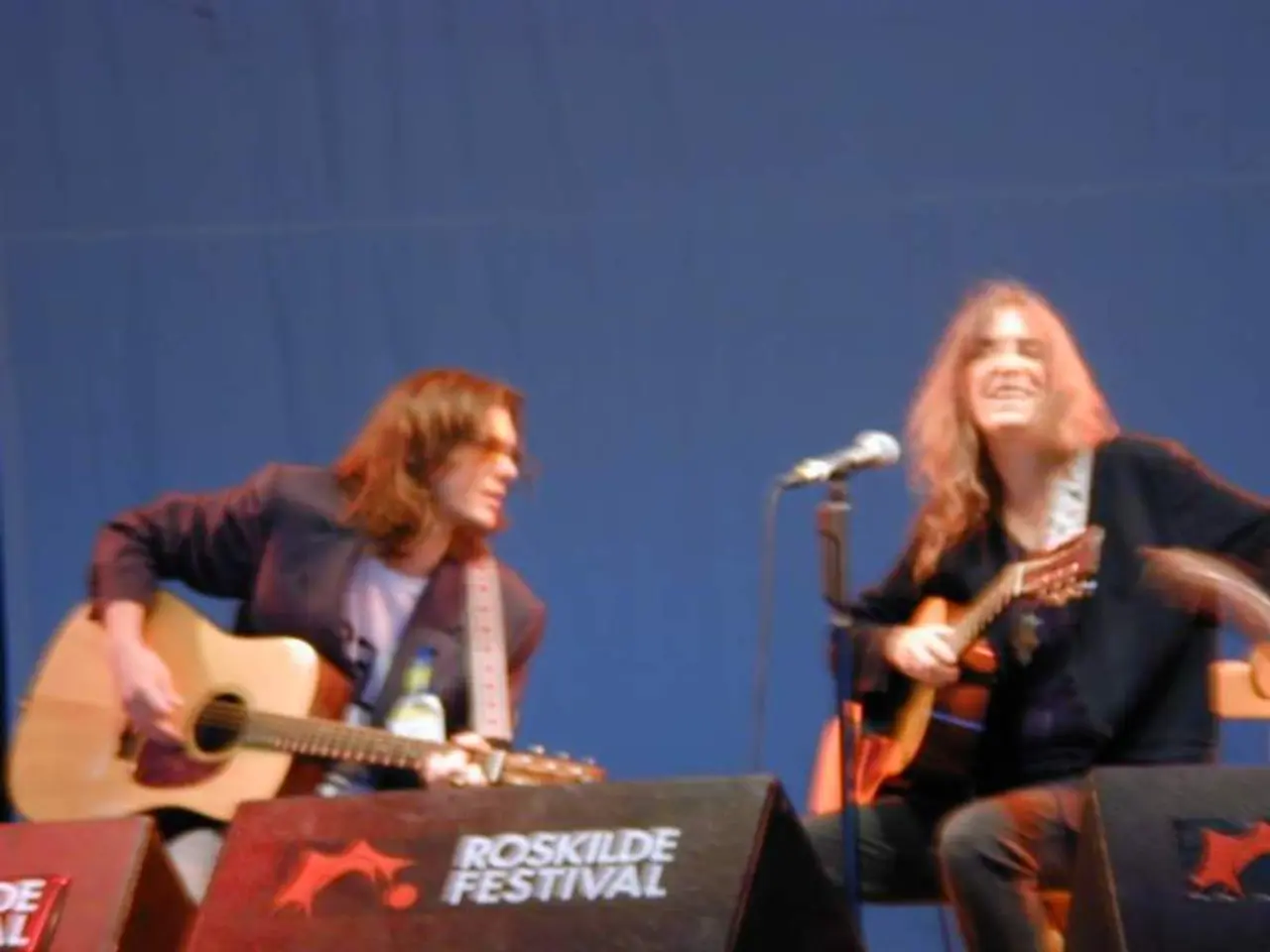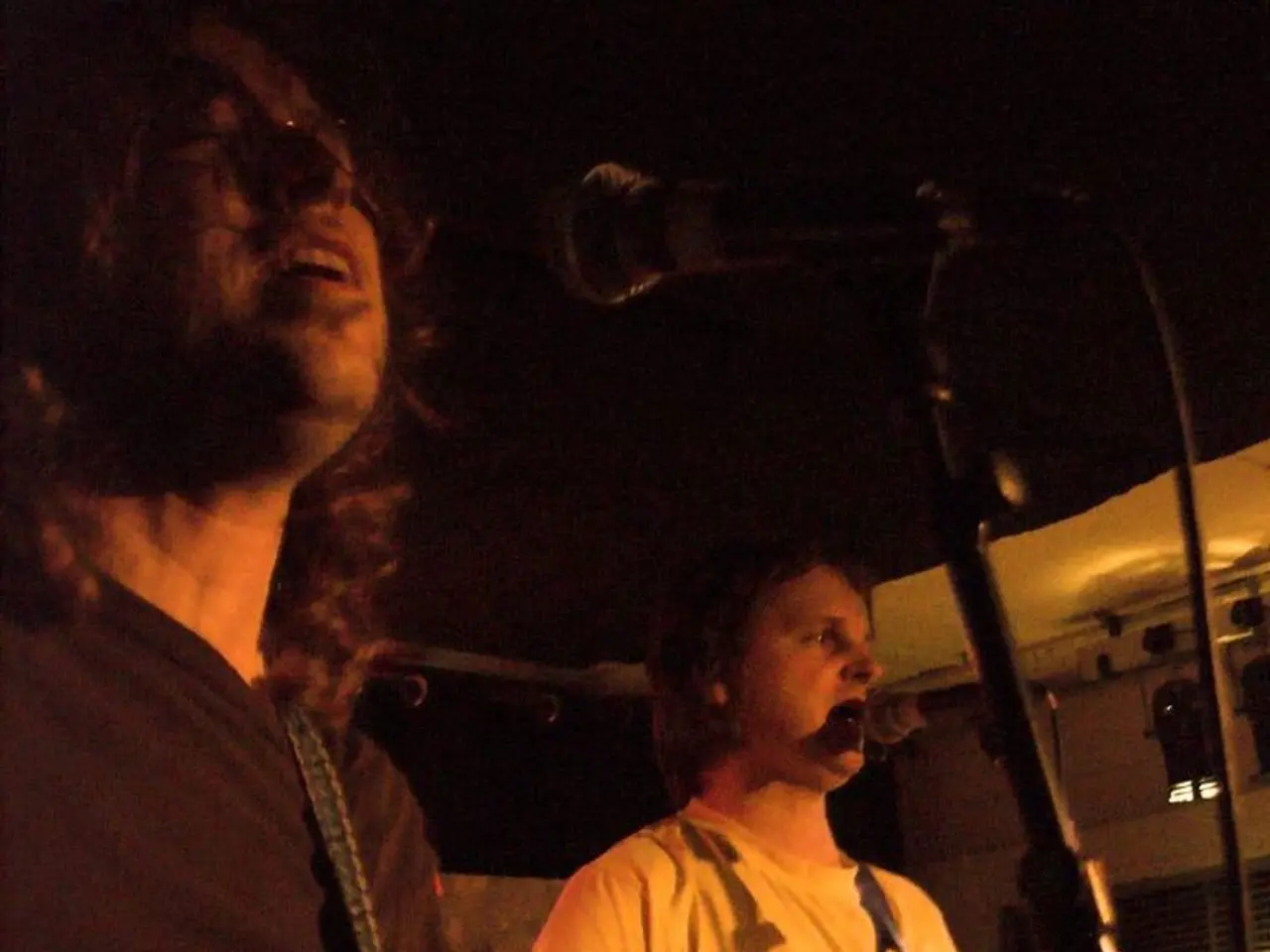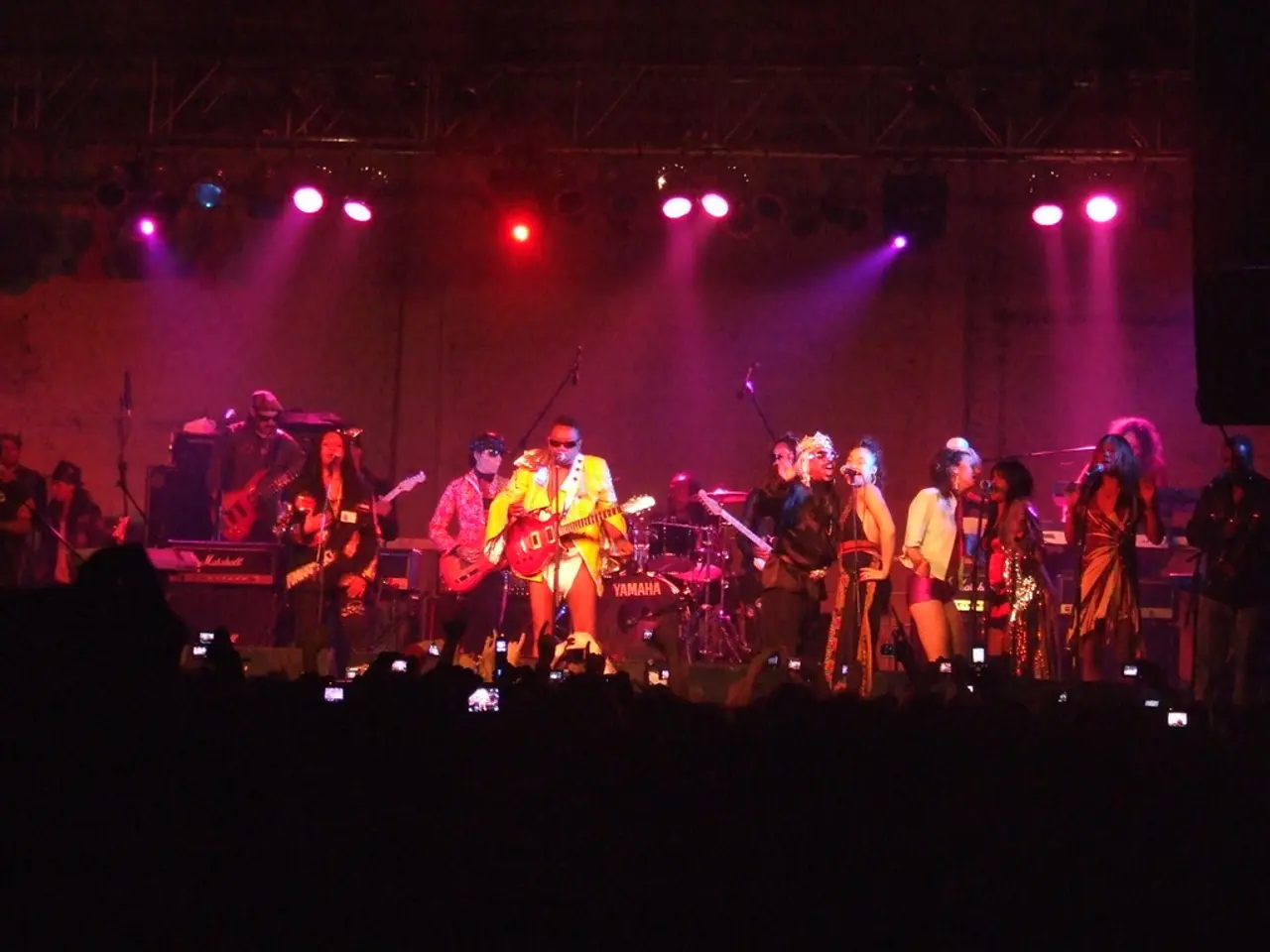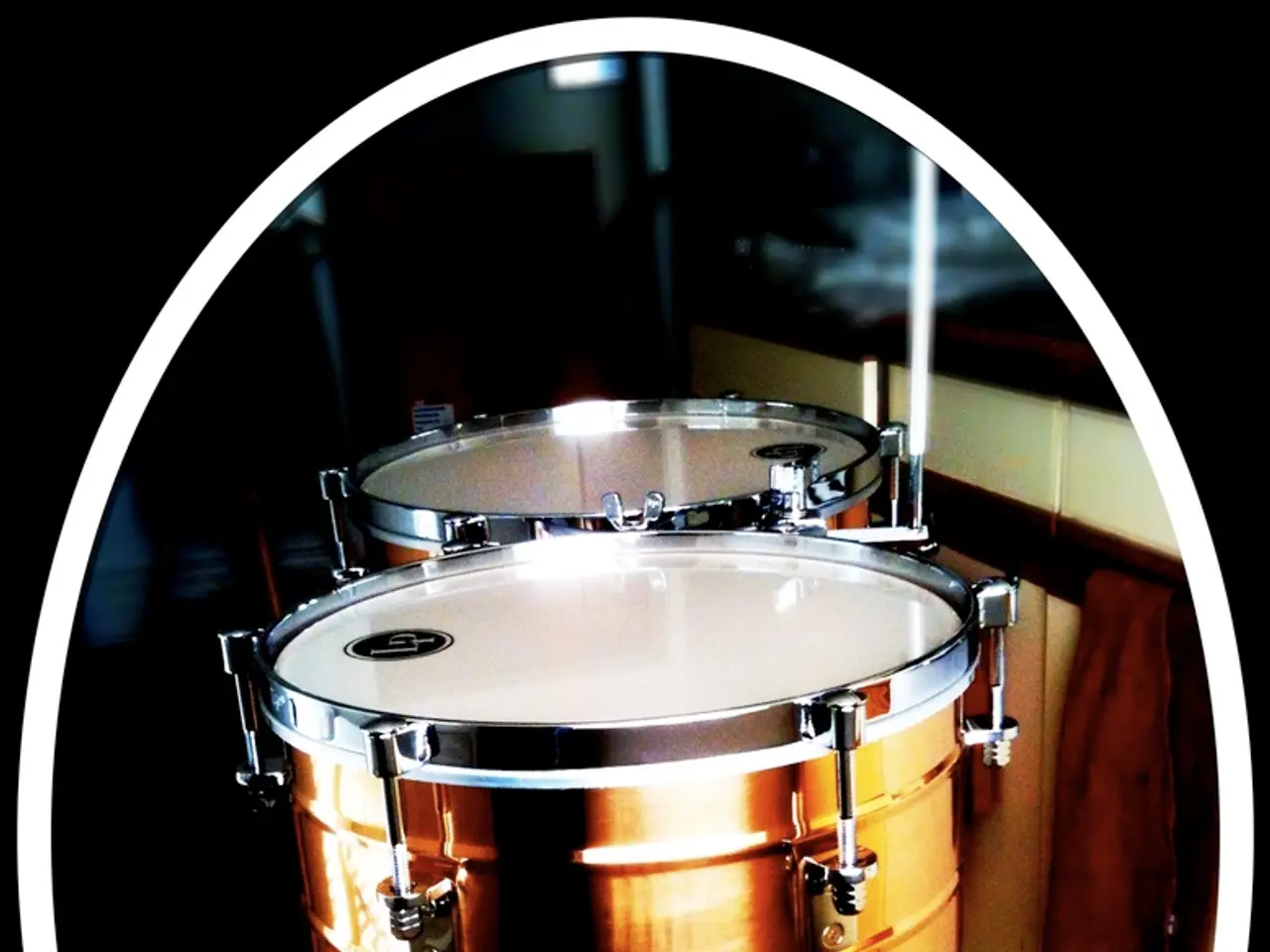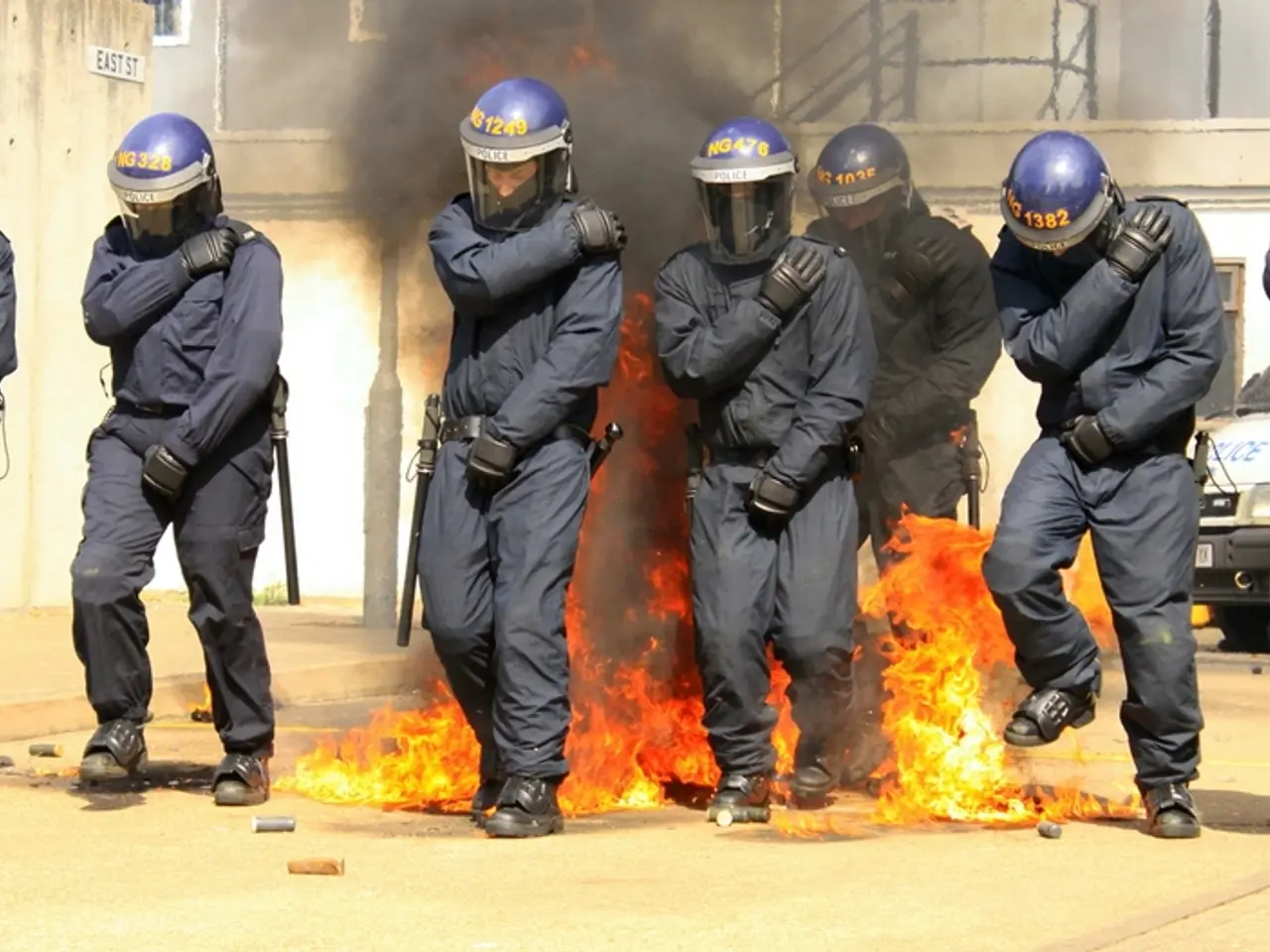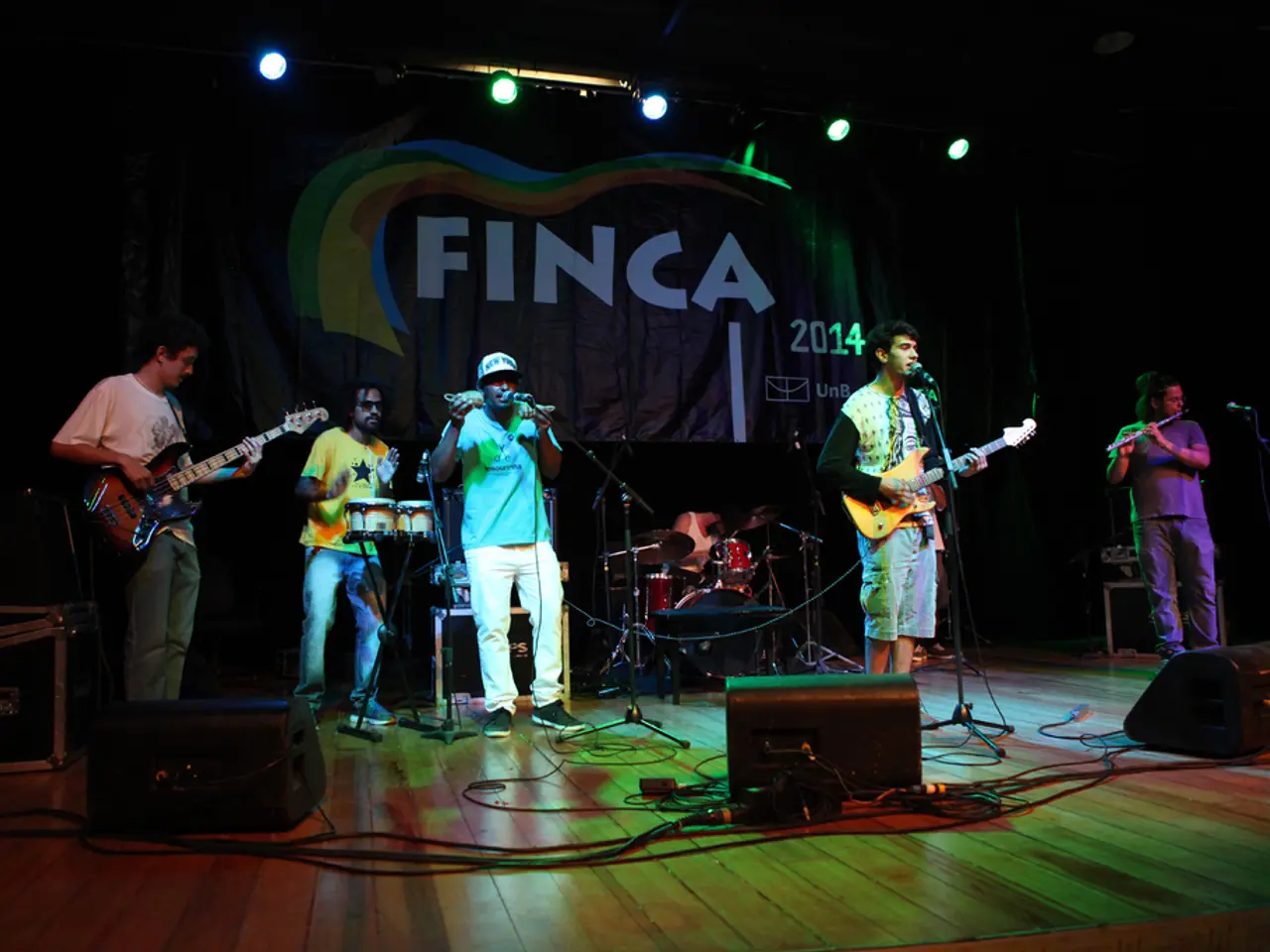Earth quaked rhythmically to the tunes of Oasis, surpassing Taylor Swift's seismic records while the Gallagher brothers ruled the scene.
Oasis' 2009 Concert at Murrayfield Stadium Remains the Record-Breaking Seismic Event
The concert by British band Oasis at Murrayfield Stadium in Edinburgh, Scotland, on June 17, 2009, holds the record for the most powerful concert ever recorded at the venue in terms of seismic impact. The peak seismic power of the concert was a staggering 215.06 kW[1], more than twice as powerful as the next strongest concerts recorded at the venue over the past 20 years[2].
Since then, no concert at Murrayfield Stadium has surpassed this seismic record. For comparison, Taylor Swift's 2024 concert, the most recent noted seismic event there, recorded a peak seismic power of 82.56 kW, significantly lower than Oasis' 215.06 kW peak[1].
Here's a list of the top four concerts at Murrayfield Stadium in terms of seismic power:
| Concert | Year | Venue | Peak Seismic Power (kW) | |------------------|------|------------------|-------------------------| | Oasis | 2009 | Murrayfield | 215.06 | | Red Hot Chili Peppers | 2004 | Murrayfield | 106.87 | | Kings of Leon | 2011 | Murrayfield | 96.18 | | Taylor Swift | 2024 | Murrayfield | 82.56 |
The seismic power of a concert is not related to the volume of the music, but rather the energy generated by the fans. The energy of the crowd is a key factor in determining whether a new record will be set at the upcoming Oasis concert.
The seismic signals from Oasis' 2009 concert at Murrayfield Stadium corresponded to an energy of 215 kW[3]. These signals were captured by the British Geological Survey (BGS) through a seismic station installed about four kilometers away from the stadium[4]. The peak in energy was recorded exactly when the band took to the stage and played "Rock 'N' Roll Star."
The height and intensity of the jumps, as well as the weight of the crowd, are determining factors in the power registered[5]. This energy is enough to power 30 scooters featured on the iconic album Be Here Now.
As Oasis prepares to perform three shows at Murrayfield Stadium as part of their tour, there is an expectation that the concert could potentially surpass the 2009 record[6]. However, Callum Harrison, a seismologist at the BGS, did not rule out the possibility of a new record being set[7]. The main factors for potentially surpassing the 2009 record are the energy of the public and how they respond to the music.
Other concerts, such as Travis Scott in Rome, have also generated seismic vibrations, but these are not recorded as surpassing the Oasis 2009 event at Murrayfield[8]. The Oasis concert remains the benchmark for seismic power at that venue.
References:
- BBC News
- The Scotsman
- The Guardian
- The National
- Phys.org
- NME
- BBC News
- The Independent
The seismic power of the upcoming Oasis concerts could potentially surpass the record-breaking energy generated by their 2009 concert at Murrayfield Stadium, making it a significant event not only for entertainment but also in the realm of sports, as the crowd's energy will be a determining factor. Other notable concerts, such as Travis Scott's in Rome, have produced seismic vibrations, but they have not yet been recorded as surpassing the Oasis 2009 event at Murrayfield, which holds the benchmark for seismic power at that venue.
